Nestled in the rolling hills of North central Texas is a little town called Glen Rose.  This little town, with a population of around 2,300, has been a tourist attraction since the mid 20th century with the discovery of dinosaur fossil footprints along the banks of the Paluxy river that runs through the town. Old Indian legends from the area around Glen Rose say that giant turkeys and men used to leave their footprints in the stone river bed.
This little town, with a population of around 2,300, has been a tourist attraction since the mid 20th century with the discovery of dinosaur fossil footprints along the banks of the Paluxy river that runs through the town. Old Indian legends from the area around Glen Rose say that giant turkeys and men used to leave their footprints in the stone river bed.
In 1908 a massive flash flood tore through the Paluxy river causing Volkswagon sized boulders to be washed down the stream. The flood caused the river level to rise 27 feet. The erosion that resulted from the flood exposed new layers of rock along the bed and shores of the river.
Not long after the flood, fossilized dinosaur footprints were found by a local resident named George Adams who thought they might be giant turkey tracks. When these footprints were shown to Robert McDonald, a local school teacher, they were determined to be a type of carnivorous dinosaur.
George’s brother Ernest Adams, who was a well educated man, also knew that these tracks had been produced by dinosaurs.
Earnest “Bull” Adams was friends with another resident named Charlie Moss and in 1909, while on one of their numerous swimming excursions in the Paluxy river, Bull Adams showed Charlie another set of tracks. He referred to them as “giant man tracks”. 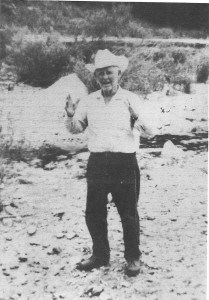
At least 15 local people testified to seeing the same set of tracks in that area which became known as the 4th crossing tracks. Mr. Moss said this about the tracks, “They were so plain that you could see where he was walkin’ and then he got up on the balls of his feet and commenced to run.”
Around 1910, Charlie took an interest in the tracks that Bull Adams had shown him. He also found what he thought were giant elephant tracks. They, in fact, turned out to be large five toed sauropod tracks which were that of a long necked plant eating type of dinosaur now given the name Paluxysaurus in the nearby Dinosaur Valley State park brochure.
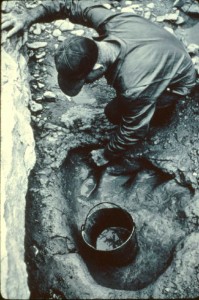
In 1918, another flood occurred which washed away additional rocks exposing more of the layers. Unfortunately the 4th crossing “giant man tracks” were swept downriver never to be seen again. Mr. Moss, a young man at the time and just back from the first world war, claimed to have found another set of what he described as “giant man tracks” in the location called “Blue Hole” which is now in Dinosaur Valley State park.
The tracks were referred to by locals as “Charlie’s tracks”. Later these tracks too were washed away in another flood in the early 30’s.
Another local resident of Glen Rose with property up against the Paluxy river, named Emmett McFall, claimed to have first seen the “giant man tracks” in 1923 when he was 28 years old.
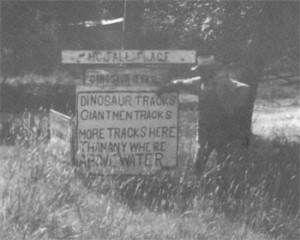
Emmett used to have a sign out on the McFall property advertising to the public to come and see the dinosaur and giant man tracks which were more prevalent there than any place along the river at that time. He would charge a small fee and would give tours to people along the banks of the Paluxy river behind his house.
During the depression many local residents like Jim Ryals chiseled tracks out of the river bed and sold them to tourists. The public, at the time, was mostly interested in dinosaurs so it was generally the dinosaur tracks that were taken out of the river. However, after some time, a few of the giant human like footprints were taken out and sold also. A very clear and pristine human track was extracted by Mr. Ryals and then sold to a Doctor Cook in Cleburne TX.
Eventually, in 1938, a couple of human footprints taken from the Paluxy river ended up in an Indian trading post store front window in Gallup, NM. A field explorer for the American Museum of Natural History in New York named Roland T. Bird was passing through NM on a nationwide search for dinosaur tracks. These and other dinosaur tracks lead Mr. Bird through Glen Rose, TX on his way back to New York. He wanted to examine the track claims from the Paluxy for himself. Read more about Roland Bird’s experience in Glen Rose.
Glen Rose soon became a point of national attention because of the tracks and then became a tourist attraction because of the dinosaur and man tracks.
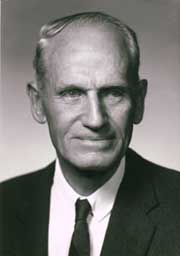
Some time during the 1950’s a local resident of Glen Rose named O.W. Willet found and extracted a human footprint from the Paluxy river. Read more about the Willet print.
In 1964 Dr. Billy Caldwell a geologist from Fort Worth Texas had an amazing encounter with one of the “giant man tracks” from the Paluxy river when one of his quarry stone suppliers from Glen Rose found a human footprint in stone.Read more about Dr. Billy Caldwell and this encounter.
Through the 1940’s, 50’s,and 60’s the dinosaur and man tracks were seen by thousands of people, and to local residents of that time, the giant man tracks were not a problem. Before this time, the theory of evolution had not become widespread throughout the public education system, and as a result, the residents in and around Glen Rose thought nothing of these giant human footprints in stone.
Robert Summers, a local resident of the area during that time, recalls seeing these human footprints in stone. Read more about Robert Summers.
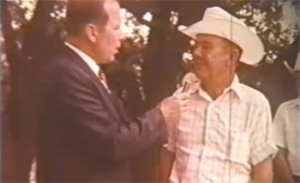
Additionally, Cecil N. Dougherty a chiropractor that moved to Glen Rose, specifically because of the tracks, spent 17 years investigating the tracks. In 1971 he came out with a book called “Valley of the Giants” which gave descriptions, locations, and some pictures of the giant human foot prints.
In 1972, Dinosaur Valley State Park opened to the public. Retired park rangers have told people that they used to have yellow paint sprayed around the human tracks and would point them out to the public when they came to visit. But after evolution became popular in the mid to late 1970’s they were forced to tell the public that there were no human tracks in the park.
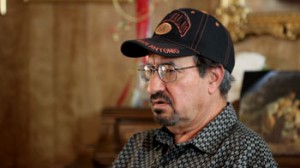
Jesse Diaz, resident of Crowley Texas, was in Dinosaur Valley State Park on opening day in 1972. He recounted his experience in an interview with us. The encounter he had is startling. Listen to the interview and learn more about Jesse’s experience here.
In 1981, Carl Baugh came to Glen Rose to excavate some of the dinosaur tracks. This trip to Glen Rose would ultimatly set his life on a different course. Mr. Baugh would go on to establish his a museum which remains in Glen Rose to this day. Learn more about Carl Baugh, the Creation Evidence Museum, and his work.
Later in 1984, Dr. Baugh obtained a print from the Paluxy through Clifford Burdick. Burdick found the footprint in the 1960’s during construction of the Route 67 bridge that crosses over the Paluxy river.
One of the most amazing human footprint discoveries to come from the Paluxy River was found by 72 year old resident of Stephenville Texas and amateur fossil hunter, Alvis Delk. Read more about his discovery here.
Even though the primary focus of this site involves the human footprints discovered in and around the Paluxy river, there have been other fossil human footprints found. These footprints are often found in rocks that predate man’s supposed arrival on the “evolutionary” scene. Use the link above to explore the worldwide phenomena of human fossil footprints.
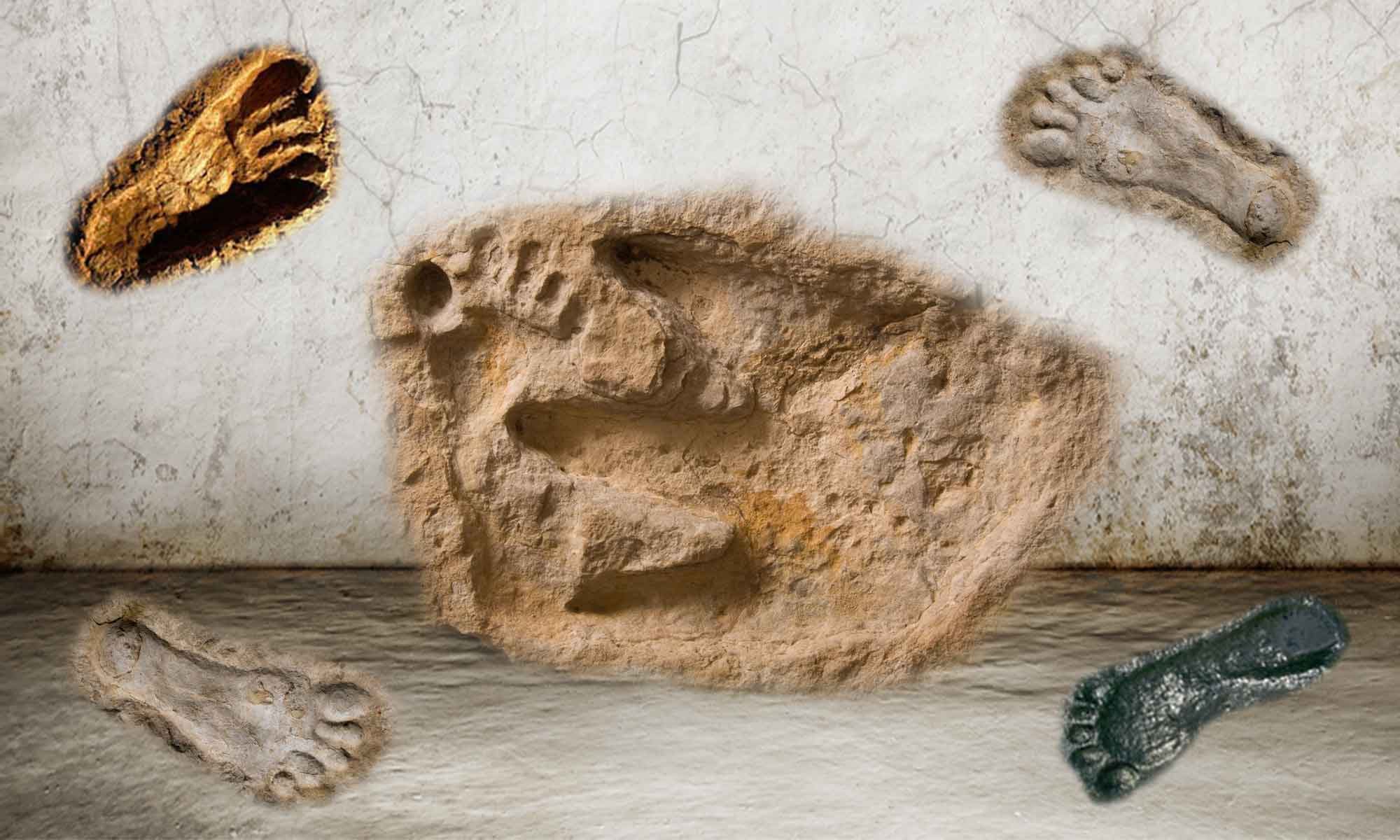
My grandmother used to tell us our Uncle Cecil discovered “Dougherty Falls”. Where is this located? My family would like to visit this location.
I’m not familiar with “Dougherty Falls” I imagine that it is located on the Paluxy River around Glen Rose Texas. I’m sorry I cannot be of more help with this. Kind regards, Jeff